No Results Found
The page you requested could not be found. Try refining your search, or use the navigation above to locate the post.
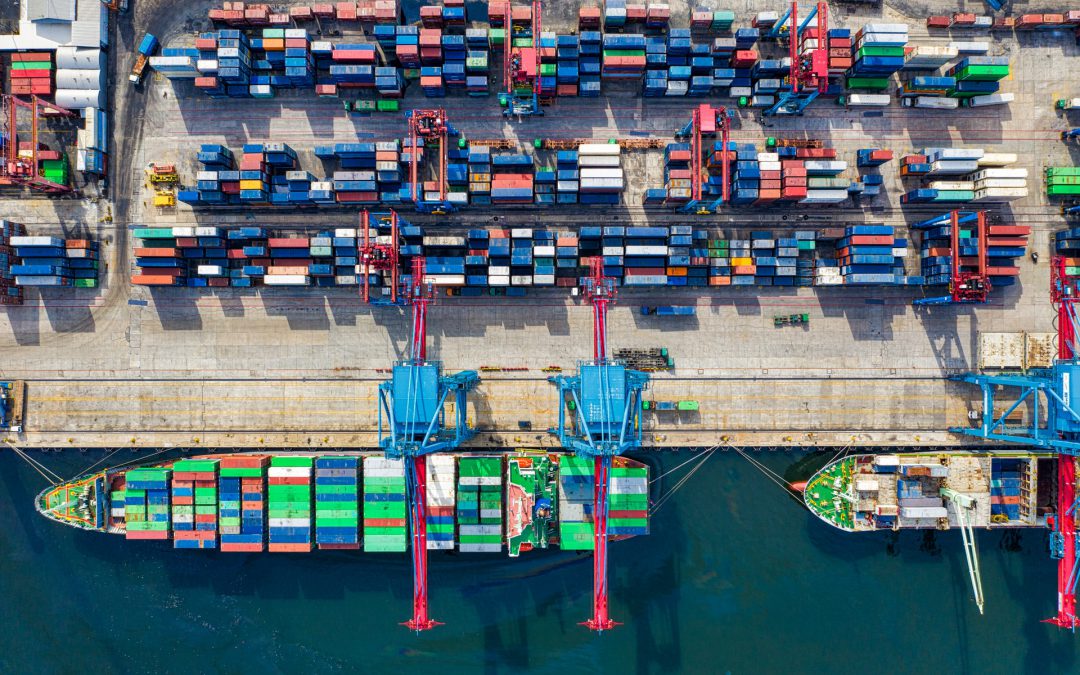
In February 2019, we (KOIOS Master Data) embarked on a successful year-long research and development project focusing on “Using ISO 8000 Authoritative Identifiers and machine-readable data to address international trade and counterfeiting challenges”. This project was funded by Innovate UK, part of UK Research and Innovation. ISO 8000 is the international standard for data quality.
This part of the article (part one) explains the problem counterfeit goods and misclassification of products has on the UK PLC and the proposed solution which won us the Innovate UK Government grant.
Counterfeit products and misclassification of products, when importing into the UK, cause major challenges for commercial organisations and the economy in the UK. These challenges increase a business’s exposure to risk, including consumer health, safety and well-being.
The impact of global counterfeiting on the UK economy is increasing. The Organisation for Economic Co-operation and Development (OECD) states that forgone sales for UK companies due to infringement of their intellectual property (IP) rights in global trade amounted to GBP 11 billion and at least 86,300 jobs were lost due to counterfeiting and piracy in 2019.
Protection from counterfeiting could save some organisations £000’s: for example, Greek customs seized 17,000 bearings, purporting to be from SKF, worth €1m in a single anti-counterfeiting operation.
When importing into the UK, importers are required to declare a commodity code for the products being imported. The commodity code is used to collect duty and VAT and dictates the restrictions and regulations, including the requirement for licensing, when importing or exporting the product.
Often the importer of the product does not have the technical knowledge to classify the product correctly. This, in combination with the complexity of the tariff code system currently adopted by the European Union (EU), and subsequently by the UK, causes many cases of misclassification. These cases are both intentional and unintentional.
Misclassification causes incorrect duty and VAT ratings to be applied to companies importing products, and also distorts trade statistics. Fraudulent misclassification leads to the UK losing billions in tax revenue.
Importers currently make customs declarations using the Customs Handling of Import and Export Freight (CHIEF) system, with some importers transitioning to the newer Customs Declaration Service (CDS).
The current importing process is not stringent enough and information is declared too late in the process. This results in a lack of transparency of the origin of products and a lack of quality data supporting the import and trade.
Therefore, Customs have the near impossible task of identifying and intercepting counterfeit or misclassified products. Customs activities increase spending by the UK Government on customs checks and delay trading activities.
We believe that the challenges facing HMRC and the organisations that suffer from counterfeit goods can be solved with a stringent digital solution. A digital solution that captures:
in a timely manner (pre-arrival to the UK border). This assured, single source of data can then be used by all parties in the supply chain, including HMRC and border forces. HMRC will then be able to use this trusted data to better target resources on more risky consignments and the platform can be a requirement for inclusion in a trusted trader programme.
This digital solution can be taken further so that the importer using the platform can establish a purchase order with the seller.
We also believe that we can help to reduce the misclassification of products by:
Without a digital data solution for the automating of tariff code assignment and the provenance of products, no significant improvements to the current state of play can be achieved.
The proposed solution would enable HMRC to:
This proposal formed the fundamental basis of our successful Innovate UK grant application.
The next part of this article outlines the development progress made towards building a digital solution, how machine learning and natural language processing techniques were used during the year-long project and how the project can move forward.
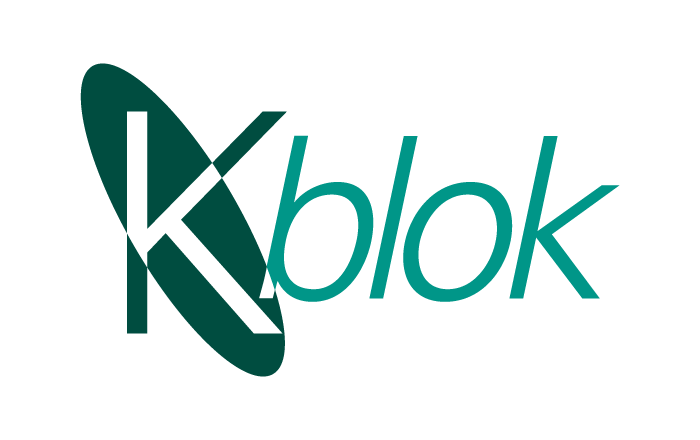
If you think that you can add value to this project and would like to explore how we could collaborate then please get in touch.
+44 (0)23 9387 7599
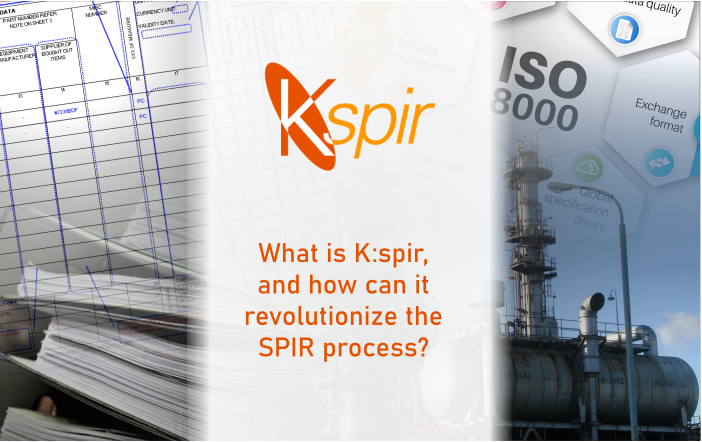
At KOIOS Master Data we have a unique understanding of the difficulties caused by the current SPIR (Spare Parts Interchangeability Record) process. Through our team’s years of MRO consultancy work, we have first-hand experience of how damaging the poor-quality data supplied in SPIRs can be to oil and gas projects. It can have a profound effect on cost, time and resource – cost, time and resource that could be spent innovating and developing a competitive advantage. Not to mention, the unnecessary wastage it can lead to, in an industry that can hardly accommodate it in the current climate. In this age of Industry 4.0, digital transformation and international data standards such as ISO 8000, the question begs – why is data quality consistently letting the side down? When we struggled to find an effective SPIR solution, KOIOS Master Data was born and we set out to create one.
K:spir is the only SPIR software designed this century using ISO 8000 standard data. It creates machine-readable data that retains quality throughout the chain, enabling accurate decision making and resulting in reduced cost, time and resource.
Here, we look at the importance of master data management, the challenges created by the SPIR process, and how K:spir is uniquely positioned to resolve those challenges.
In this age of ‘data explosion’, most businesses are aware of how poorly-managed data can put them on the back foot. In Experian’s 2019 Global Management Data Research, they found that 95% of organizations surveyed see a negative impact from poor data quality.
Similarly, the Aberdeen Group’s Big Data Survey in 2017 found that the biggest challenges for Executives arise from data disparity, including inaccessible data, poor quality data informing decisions and the growing need for faster analysis.
The overall effect is a lack of trust in data, to the great detriment of strategic decision making. And when you can’t trust your data to inform business decisions, then cost, time and resource will inevitably suffer.
In the context of the SPIR process, accurate decision making is everything. The SPIR exists as a tool for forecasting spares requirements for the life of a project, its sole purpose being to assist the Owner Operator (O/O) to make accurate decisions. Yet, as many will attest, the data supplied is often inaccurate, hard to access and sometimes supplied by the Engineering Procurement Contractor (EPC) at handover, by which time it is often too late to inform anything at all.
Experts have raised the question – if you can’t trust SPIRs to make accurate procurement decisions, then are they worth the paper they’re written on?. The process is clearly out-of-date, yet it continues to blight the efficiency of many oil and gas upstream projects.
The shortcomings of the antiquated SPIR process can be summarised into three key areas:
SPIRs are generated from paper forms and are transcribed many times, so part descriptions become distorted. Often, parts have multiple descriptions.
Solution: K:spir locks in data quality right at the start of the process, using ISO 8000 standard data. Part descriptions are consistent and safe from misinterpretation, providing confidence in forecasting and reordering.
SPIRs are usually completed by an Original Equipment Contractor (OEM), who is not necessarily aware of the O/O’s operating and maintenance procedures. Therefore, they do not take into account equipment criticality or maintenance capability.
Solution: K:spir uses the maintenance and repair strategy to determine the spares requirement, reducing wastage and taking cost off of the bottom line.
SPIRs often provide information in spreadsheets or pdfs, which are impossible to extract data from quickly, if at all. To extract anything meaningful is very cost and time-intensive, and relies on support from IT specialists.
Solution: K:spir provides instant reporting on the completeness and cost of spares, allowing for accurate decision making. The information is fully configurable to the requirements of the O/O. It can also create a Maintenance Bill of Materials (BoM) and is interoperable with maintenance systems.
Information is not portable and has to be re-entered for different systems.
Solution: K:spir generates portable (machine-readable) data saving significant time spent re-keying information and unnecessary data handling costs.
Data exists on many platforms and is not available to all stakeholders, all of the time.
Solution: K:spir is cloud-based, providing simultaneous access to all stakeholders in the chain. This allows for more transparency and accountability at all stages of the project lifecycle.
Sometimes even as late as handover, by which time it’s too late for the O/O to minimize the operating risk. There is no opportunity to make informed decisions, such as ordering spares with long lead times, or calculating warehouse space. This can lead to unnecessary wastage and operational difficulties along the line.
Solution: K:spir provides transparency right from the beginning of the project, allowing for critical decisions to be made early on.
With its unique set of features and benefits, it’s clear that K:spir can relieve the symptoms of the current SPIR process with immediate effect, saving valuable cost, time and resource.
A SPIR – this is not what efficiency looks like!
As confident as we are in the KOIOS software suite to advance the world of Master Data Management (MDM), there are clearly other factors that need to be addressed, most notably, ownership. It is a thorny area, and one that is being more keenly contested as digital transformation rattles on apace. As the Aberdeen Group puts it, there is a “growing urgency for better data management”, as businesses see the shortfalls of their inability to harness data.
Experian’s report shows that in 84% of cases, data is still managed primarily by IT departments. Revealingly, 75% of their sample thought that ownership should lie within the business, with support from IT. They conclude that organizations should develop their MDM strategy to fulfill the needs of a much larger group of stakeholders, who wish to harness the power of their data to improve decision making and efficiency.
In the context of SPIRs and oil and gas projects, we believe that O/Os should become more demanding over the quality of data supplied to them by manufacturers. It is unrealistic for their IT experts to have sight of the broader operational requirements, with their own priorities being diverse and demanding. It is the Executives who suffer the consequences of the risk taken by ignoring poor data, and the operations and maintenance departments that will experience the pain. Clearly, they need to make their voices heard much earlier in the process. That said, manufacturers and EPCs also need a better understanding of the challenges faced by O/Os, and in our view should share the responsibility for getting the data right from the start.
It is, as previously stated, a tough subject, but we are constantly encouraged by the conversations we have with manufacturers and O/Os alike. More and more key stakeholders are waking up to the power that effective MDM can have in driving business forwards, by freeing up cost, time and resource and supporting strategic decision making. Not just to their own ends, but for industry as a whole to fully realize its digital transformation goals.
A radical change to the SPIR process and MDM as a whole is on the horizon. While there may be no silver bullet, we firmly believe that the right software is an essential move forward. The KOIOS software suite is geared towards this larger shift in MDM, but in the case of K:spir, the results can be felt immediately.
Our hope is that O/O’s and manufacturers alike will unite in becoming more discerning and demanding about data quality, working as one to create harmony along the chain. At KOIOS Master Data, we are committed to leading the conversation and driving better data quality.
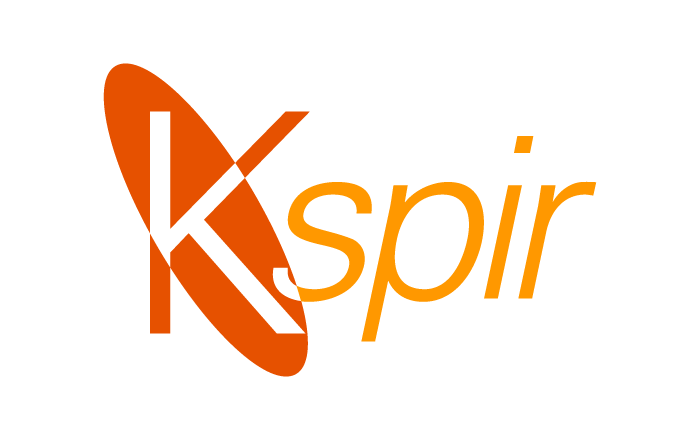
If you wish to become part of the change and join us in our vision to revolutionize the SPIR process, we would love to discuss it further with you.
+44 (0)23 9387 7599

I have carried out numerous studies of MRO inventory for companies around the globe, and I question the existence of SPIRs in a spreadsheet form in the new era of digital data.
Context: Oil and gas upstream projects typically extract material requirements from Spare Parts Interchange Lists (SPILs), sometimes referred to as Spares Parts Lists and Interchangeability Records (SPIRs) or Recommended Spare Parts List (RSPL). These lists are supplied to the owner / operator (O/O) at handover by the Engineering Procurement Contractor (EPC) having been supplied to the EPC by the manufacturer or the vendor of the equipment.
There are a number of issues for plant operators that arise from the use of SPIR documents in oil and gas projects. The release of these documents by the EPC is often left until the very end of the project, or not at all, despite financial penalty clauses being inserted in the contracts. This is a real challenge to the operator who wants to reduce the operating risk by purchasing long lead items early enough, and those who want to calculate the size of warehouse they require in a greenfield project.
The format of the SPIR is frequently inconsistent; effectively being a paper form that has been recreated onto a spreadsheet and edited many times. In the end it resembles nothing much more than an optimistic vendor order form. Certainly, it is an incredibly difficult document to extract data from, and as no two forms are constructed in the same way and often have merged cells. Extracting a complete project worth of data is a costly exercise in terms of both manpower and time.
If we look at these documents, it soon becomes clear that they have many drawbacks: they are not extractable; contain only a brief description of the product, often just a noun; they take no account of the equipment criticality; they take no account of the O/Os maintenance capability, or their spares and repair strategy, such as repair or replace. Data quality is extremely poor in these types of documents. In this example, from a single 62-line SPIR document, O-Ring is described four different ways. The shore hardness is also missing from the details, making it impossible to safely order the part from another supplier. For consumable items, it is common for the original part manufacturers name to be omitted from the document.
| SPIR Document Example | |
|---|---|
| “O” RING OD: 18.5, ID: 15.5, t: 1.5 | FKM |
| O RING OD: 16.6, ID: 11.8, t: 2.4 | NBR |
| ORING OD: 66.5, ID: 62.5, t: 2 | NBR |
| O-RING OD: 6.5, ID: 3.5, t: 1.5 | NBR |
I would also challenge the spares actually listed on the form. Interpretation of what constitutes two years operating spares vary from manufacturer to manufacturer. Some list only basic consumables, as in their opinion, that is all that is required in the first two years, some list a full production BoM (Bill of Materials) that includes such items as pump casing. Neither approach is helpful to the analyst trying to decide what spares to stock in the plant or organize an on-demand local supply for.
The companies that design and manufacture equipment rarely operate them, and EPCs do not always have experience of operating and maintaining plants – so why would they know what spares you need? Asking the vendor how he calculated the failure rates in your application gets an interesting range of answers, although when you ask him if he will take back all his recommended spares that you have not used in five years’ time, you usually get the same answer! To be fair some major manufacturers do track component failure rates in the field, but they are few and far between.
I would strongly challenge the decision to list the “two years recommended spares” on the SPIR. How many plants are designed for a two-year life? As a materials manager working with the maintenance team, I simply want to know all the maintainable items required for the life of the equipment. My task is to determine the spares required to keep the revenue producing assets running for the life of the plant.
Commissioning spares is another column frequently found on SPIR documents. Before you buy the commissioning spares check with the EPC, they will probably be responsible for these spares during the commissioning period and will be leaving you a mountain of unused spares, and will usually be asking a hefty price for them on handover. As an owner operator, you will be in danger of overloading your warehouse with spares you might never use or have already purchased.
I do not want to spend subsequent years repeating the exercise to find out what spares I do not have, or which spares I will never use, you know, those spares that were purchased “just in case”.
When reviewing SPIR documents in order to determine the spares required for the operation, the criticality of the equipment, the maintenance capability, and an understanding of the planned consumption also need to take into account. Furthermore, a number of organisations have strategies to run certain non-critical equipment to failure and then replace the complete unit rather than repair the item using the recommended spares. This information is, understandably, not on the SPIR form but is vital in the decision-making process.
It never ceases to amaze me seeing a room full of people analysing SPIR forms and ordering the spares listed – using the column added by the vendor – without taking these factors into account.
I have carried out many studies of MRO inventory for companies around the globe, and the two most frequent causes of non-moving stock is spares purchased for equipment that is no longer exists, and more commonly, spares purchased for equipment where the plant maintenance capability does not exist to repair and item; motor and pump spares are the favourites. It should go without saying that there is no point in keeping a bearing for a motor in a zoned area for your repair shop to use if the repair shop is not approved to complete work to that standard, or does not have a facility to test the repaired equipment. Pump and motor spares are most frequently purchased and remain unused, as most often the maintenance strategy is to send these units out for refurbishment when they fail. So why were they purchased in the first place? Probably because they were listed on the SPIR and the buyer has taken the appealing route of taking the word of the manufacturer regarding the required spares or they have purchased the spares as part of a package.
In the age of international digital data exchange standards such as ISO 8000, it is frankly mystifying that people are still using these outdated methods of creating and distributing the vast amounts of data required for large projects.
I firmly believe the answer lies in a simple data exchange service.
There is a paradigm shift using new technology and international standards such as ISO 8000. The antiquated process of buyer-led templates is replaced with supplier-led specification delivered in a computer interpretable format. The success of this new method lies in the provenance of data, eliminating any ambiguity and making data easy to extract.
It can be achieved by a simple clause in the contract with the EPC:
“The supplier shall supply technical data for the products or services they supply. Each item shall contain an ISO 8000-115 compliant identifier that is resolvable to an ISO 8000-110 compliant record with free decoding of unambiguous, internationally recognized identifiers.”
This result? Guaranteed data quality leading to a reduction in costs and increased efficiency.
To find out more about the tools you need to unlock the power of ISO standard digital data, visit KOIOS Master Data.

Peter Eales is a subject matter expert on MRO (maintenance, repair, and operations) material management and industrial data quality. Peter is an experienced consultant, trainer, writer, and speaker on these subjects. Peter is recognised by BSI and ISO as an expert in the subject of industrial data. Peter is a member ISO/TC 184/SC 4/WG 13, the ISO standards development committee that develops standards for industrial data and industrial interfaces, ISO 8000, ISO 29002, and ISO 22745. Peter is the project leader for edition 2 of ISO 29002 due to be published in late 2020. Peter is also a committee member of ISO/TC 184/WG 6 that published the standard for Asset intensive industry Interoperability, ISO 18101.
Peter has previously held positions as the global technical authority for materials management at a global EPC, and as the global subject matter expert for master data at a major oil and gas owner/operator. Peter is currently chief executive of MRO Insyte, and chairman of KOIOS Master Data.
KOIOS Master Data is a world-leading cloud MDM solution enabling ISO 8000 compliant data exchange
MRO Insyte is an MRO consultancy advising organizations in all aspects of materials management
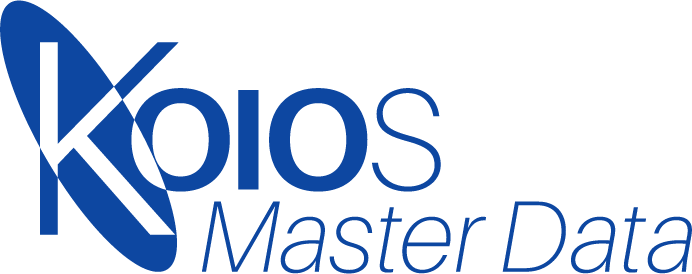
KOIOS Master Data are experts in this field. Give us a call and find out how we can help you.
+44 (0)23 9387 7599
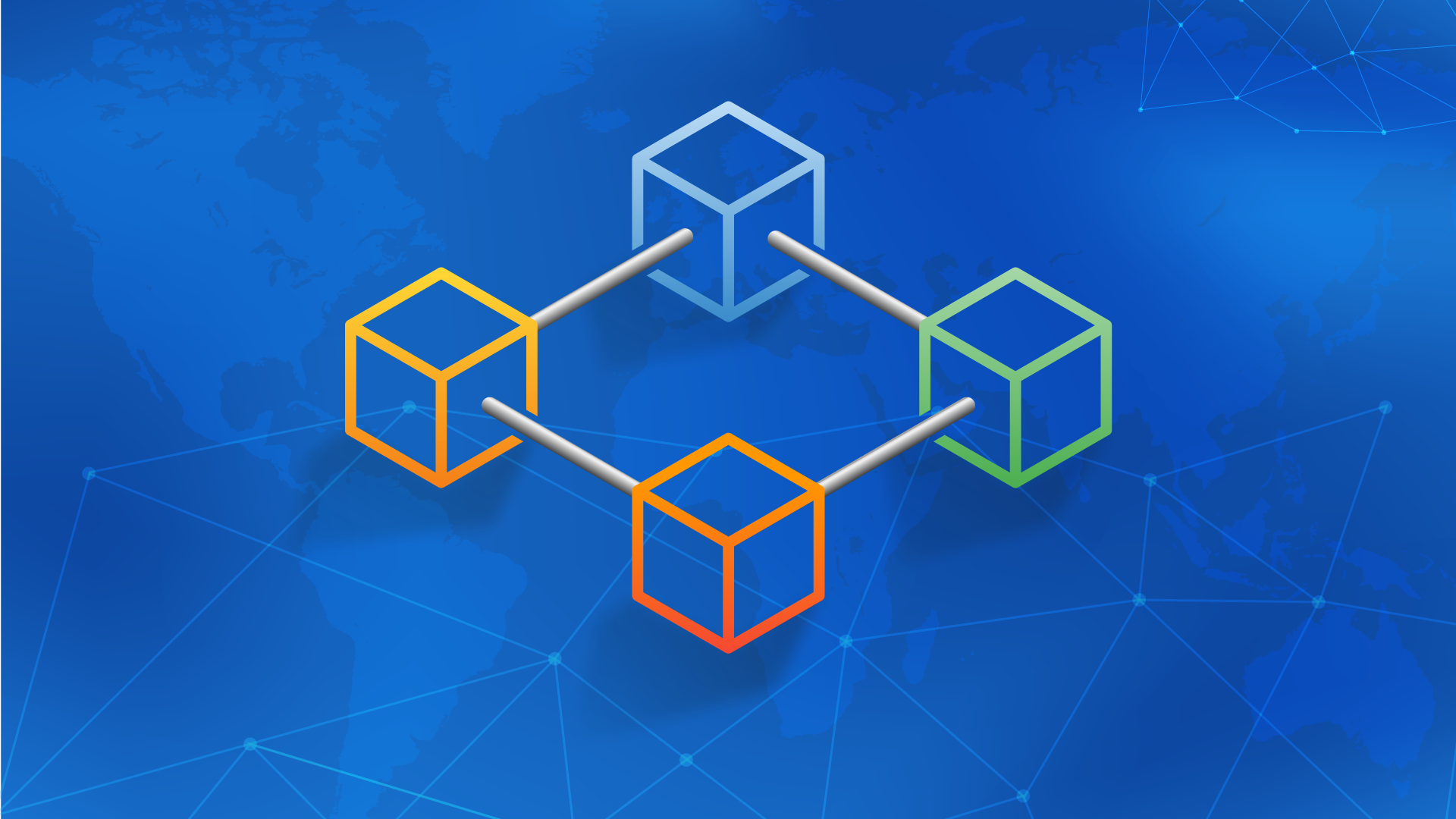

This is the online version of a speech that I was asked to deliver at the ‘Industry Blockchain Expedition‘ hosted in Linz, Austria. We have included the visuals and video’s used to illustrate some of the concepts of Blockchain and its use. This is rather a lengthy blog so, I have included a shortcut menu on the right, so you can navigate to an area of interest or resume reading.
I would like to thank the organisers of this event for inviting me to speak with you today. When I received the invitation, initiated I believe by Paul Dietl, a contact I have been working with at SKF in Steyr, I was obliged to explain to the team that I am not a blockchain expert, although I am working on a potential use case for blockchain.
However, as I explained, that one interesting feature of this use case that was different to any others we had come across, was that we were incorporating international standards into the solution.
“Perfect”, said the organisers.
So here I am!
I have three aims to achieve in my talk today:
Firstly, to give you some context. I am not an academic, I not employed by the UK government, nor am I employed by a global corporation, although I have worked for global corporations in the past.
I am a small business owner, I have two businesses; the longer established business is my consultancy business, through which I help companies with their materials management issues.
A large part of my time in that business is helping organisations resolve their materials management issues, the root cause of which is frequently poor data quality.
My efforts to find appropriate tools that incorporated international data quality standards to help solve these data quality issues that my clients were facing was frustrating, and so, a couple of years ago I decided to start my own software company to create the software that I felt the market needed.
I am recognised by the British Standards Institute and the International Organization for Standardization as an industrial data expert, I give up a lot of my time developing standards in that area, and I sit on two international working groups.
Following this meeting I am off to Houston for a weeks work on the oil and gas interoperability standard ISO 18101 that will be published next year.
This talk is presented from the perspective of my software company, KOIOS Master Data Limited.
Before you hear me speak on the subject, I would like to play you a short advertisement created by IBM to explain blockchain.
IBM Blockchain: The Blockchain built for smarter business

Blockchain was created to securely exchange transaction data; to record tangible and intangible assets; and to create an alternative to central bank controlled currencies.
One compelling feature of blockchain is that these records are immutable; that means that they are unchanged over time, and unable to be altered.
As you saw in the video, implementations of blockchain have moved beyond alternative currencies, and are being used to record master data as well as transactional data.
A block is essentially a data record, just like an individual record in a traditional ledger.

When a second block of data is added it is linked to the first block, creating a chain.
Blocks record the time and the sequence of transactions. Each block contains a HASH key, which is a unique digital identifier.

When a third block of data is added to the chain, it links to the second block, not the first block. All blocks are linked sequentially.
As I mentioned earlier, there are a number of ways to implement blockchain, and in this presentation we will be discussing examples where Hyperledger may be the appropriate technology.
Hyperledger is hosted by the Linux foundation, an open source community, whose vision is to be the facilitator for mainstream commercial applications.

Another key feature of blockchain is the decentralised architecture. This decentralisation means that there is no single point of failure that would bring the network down. This is a key differentiator to the traditional single database model that is increasingly vulnerable in today’s world.

Decentralisation is achieved by the creation of network nodes. A network node is another term for a computer that maintains a copy of the database.

I explained earlier that each block contains a unique HASH key as well as the HASH key of the previous block. This architecture is designed to ensure it is impossible to insert a new block between two existing blocks, or to alter the contents of a block without detection.
Should there be a conflict, then protocols such as Practical Byzantine Fault Tolerance (PBFT) are used as a method of conflict resolution.
One difficulty in understanding the topic is the bewildering array of terminology. One particular term that can cause confusion is ‘distributed’, which can lead to the misconception that because something is distributed there is therefore no overall controlling authority or owner.
This may or may not be the case — it depends on the design of the ledger. In practice, there is a broad spectrum of distributed ledger models, with different degrees of centralization and different types of access control, to suit different business needs.
These may be ‘unpermissioned’ ledgers that are open to everyone to contribute data to the ledger and cannot be owned; or ‘permissioned’ ledgers that may have one or many owners and only they can add records and verify the contents of the ledger.
In my efforts to demystify blockchain, I have already introduced a number of terms that may be unfamiliar to people new to the subject. In my standards work, terms and definitions are a vital element of the documents we produce.
In this slide pack, that will be distributed after this event, I have added an annex with explantations of some of the terms for you to study at a later date. I will also add a copy of this speech and the slides to the KOIOS website.
When blockchain is discussed, one of the areas of confusion is the term “distributed’ as in distributed ledger. The word distributed may imply to some people that there is no overall control or authority.
That may or may not be the case.
All distributed ledger applications are designed for the specific use case, and that use case will determine the degree of central control and other parties access control.
The page you requested could not be found. Try refining your search, or use the navigation above to locate the post.
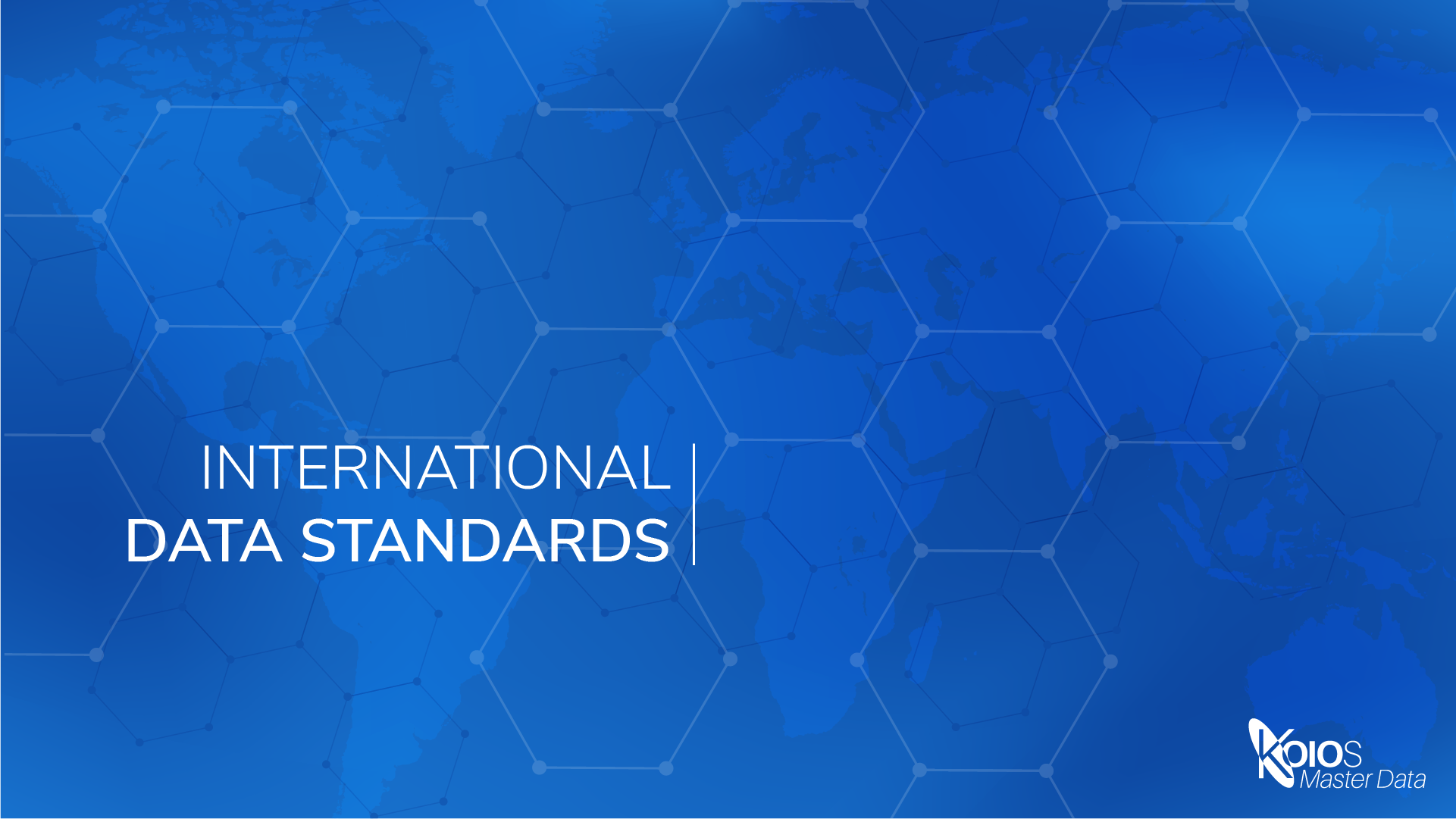
As I discussed earlier, I am actively involved in the development of international standards.
Standards are a consensus of best practice. International standards affect many areas in our everyday lives, and I am going to show a short video to highlight this.
But, before I start the video, can I please have a show of hands? If you have heard of the standard ISO 8000, can you please raise your hand. If you thought I said ISO 9000, please put your hand down!
Thank you. Let us watch this short video showing how ISO Standards influence the world around us.
What ISO standards do for you
As you can see from the video, ISO 8000 is the international standard covering data quality; and part 110 covers the exchange of quality data.
Blockchain is not a cure for data quality problems, if you exchange poor quality data in a blockchain you have the same issues as you do currently when you exchange poor quality data using traditional methods.
By adopting ISO 8000, organisations will benefit enormously from improved data quality; data provenance; data interoperability; and improved operational efficiency.
Facsimile of ISO 800-115: Source iso.org
The working group that develops ISO 8000 is one of the most active ISO working groups, and this year we published ISO 8000-115, the standard for the exchange of quality identifiers. Identifiers are used to point to data records, but before this standard was introduced it was rare for an identifier to state who owns the identifier, or part number, and the associated data record. The lack of the prefix leads to confusion over the provenance of the relevant data set.
The syntax of an ISO 8000-115 complaint identifier ensures that the owner of the data set is clearly identified by the adoption of this standard. The standard also requires that the complete identifier resolves to an ISO 8000-110 complaint specification.
The data cleaning industry is guilty of creating data specifications with no other provenance than their own, which frankly is no guarantee of accuracy or quality. If you employ third party data cleaners, I challenge you to ask them about provenance and data quality standards, and compare their answers with these slides.
Facsimile of ISO 800-116: Source iso.org
I will be talking more about trust shortly.
A key element of trust in commercial contracts is knowing who you are dealing with. Know your Client or customer (KYC) is becoming an accepted business and compliance norm.
ISO 8000-116 is an implementation of ISO 8000-115. ISO 8000-116 will be published early in 2019. The standard defines a method of identifying organisations and individuals by the using the reference of the issuing authority that created the record.
In Austria, the Federal Ministry of Justice maintains the commercial register, and each company has a registration number. This number is used as the suffix of the identifier, and the prefix is the ISO two letter code for Austria (AT), followed by CR for the commercial register.
This format allows every organisation to be given a globally unique authoritative identifier, not a proxy identifier issued by a third party.
This will prove a very useful standard for managing your supplier database and eliminating duplicate records.
The Electronic Commerce Code Management Association (ECCMA) has launched a very useful website www.ealei.org where you can search a growing, global, authoritative register of companies. I encourage you to add your company details to the site.
Facsimile of ISO TC/307: Source iso.org
ISO creates standards through a series of technical committees and working groups. Blockchain and distributed ledger technologies are being developed by technical committee 307.
Technical committees and working groups consist of experts from participating member countries. Technical committee 307 consists of 39 participating members, and the Austrian Standards Institute (ASI) is the member body through which local experts are appointed to help develop the standards.
Facsimile of ISO TC/307: Source iso.org
This technical committee is currently responsible for developing 11 standards under the heading of blockchain and distributed ledger technology. Subjects include governance, interoperability, smart contracts, and data protection.
The convergence of creativity and technology can lead to radical changes in existing business models and the organizational structures they sit within.
Distributed Ledger Technology (DLT) is presently as much a series of challenges and questions to existing structures, as opposed to a set of answers and practical possibilities.
But it appears to have at least some qualities, and to be in the appropriate context, to produce change at the more revolutionary end of the spectrum.
DLTs offer significant challenges to established orthodoxy and assumptions of best practice, far beyond the recording of transactions and ledgers. These potentially revolutionary organizational structures and practices should be experimentally trialled — perhaps in the form of technical and non-technical demonstrator projects — so that practical, legal and policy implications can be explored.
The page you requested could not be found. Try refining your search, or use the navigation above to locate the post.
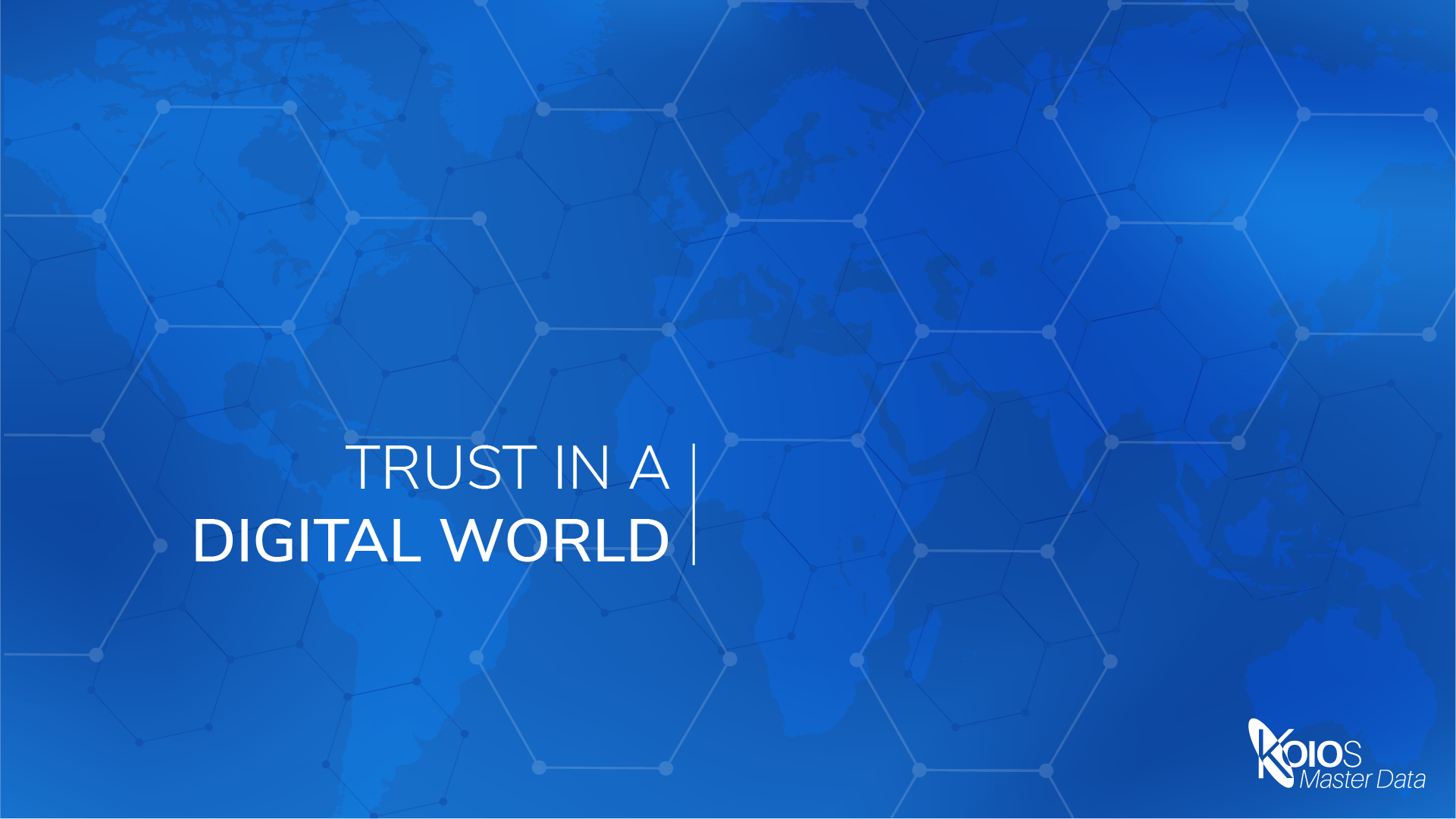
As I previously mentioned, trust in the digital world is an important subject, and I have explained how standards can play a part in building that trust.
The convergence of creativity and technology can lead to radical changes in existing business models and the organizational structures they sit within.
Distributed Ledger Technology (DLT) is presently as much a series of challenges and questions to existing structures, as opposed to a set of answers and practical possibilities.
But it appears to have at least some qualities, and to be in the appropriate context, to produce change at the more revolutionary end of the spectrum.
DLTs offer significant challenges to established orthodoxy and assumptions of best practice, far beyond the recording of transactions and ledgers. These potentially revolutionary organizational structures and practices should be experimentally trialled — perhaps in the form of technical and non-technical demonstrator projects — so that practical, legal and policy implications can be explored.
Make no mistake, blockchain is potentially disruptive to any existing organisations whose business model is founded on centralised control.
It is this potential for disruption and the ability to create global networks quickly that gives smaller, more agile, businesses an opportunity to compete in global markets in the same way as the internet has done in recent years.
There are challenges to be overcome, and new best practices will emerge through the development and adoption of standards, but small companies are well placed to benefit from this disruption to traditional ways of doing business.

Trust is a risk judgement between two or more people, organizations or nations. In cyberspace, trust is based on two key requirements:
All contracts, smart or otherwise, rely on the ability for each party in a transaction to know who the other parties are.
There are many cases currently where the true identity of certain parties is not clear, and ISO 8000-116 identifiers will play a massive role in the future of smart contracts.
Another key element to ensure trust, is the level of security based on public key infrastructure federations, known as PKI. These security systems are rated by their Level of assurance (LoA).
In any system that has achieved a very high assurance, level 3 or 4, some sort of encryption standard will have been deployed.
In Austria, the e-government scheme is a level 3+ PKI.

Trust is a risk judgement between two or more people, organizations or nations. In cyberspace, trust is based on two key requirements:
Data interoperability. We need to understand each other in order to work together, so our data has to have the same syntactic and semantic foundations;
Policy interoperability. Our policies need to be aligned or based on agreed common policy, so that I can be confident that you will treat my information in the way that I expect (and vice versa)
The effective, collaborative implementation and use of international standards.
Smart contracts of the future will take many forms. Whether these are permissioned or unpermissioned, public or private shared systems, depends on the use case.
Permissioned smart contracts could give a user the right to either share or withhold data with or from another party.
In this part of this section, we will discuss some practical, potential applications for the use of this technology.

Several industries use security systems based on Public Key Infrastructure (PKI) federations that rely on a cryptographic standard called X.509. These offer high and very high assurance levels (LoA 3 and 4) for employee authentication, notably in aviation, the pharmaceutical industry, defense, banking and, increasingly, e-health.
The US and China have the largest deployments of international-standard PKI federations, closely followed by South Korea (where it is mandated for all companies by regulation), Estonia, Netherlands and many others.
At LoA 3+, it is possible to link a user’s identity to other trust functions, such as legally-robust digital signatures, identity-linked encryption and physical access control in buildings. PKI federation isn’t the only option for high assurance supply chain collaboration and sharing sensitive information at scale, but it is the de facto norm today
Personalausweis, the Austrian e-government scheme is a level 3+ PKI
Today, most businesses run a centralised business model. This is a very controlled model, and it is vulnerable to a single point of failure.
At the other end of the scale we have unpermissioned, public shared systems that are 100% decentralised. Bitcoin and other crypto currencies are examples of unpermissioned, public, shared systems that are 100% decentralised.
Crypto currencies rely on anonymity, therefore must also rely on a control to gain consensus that transactions are genuine. Crypto currencies achieve this consensus through a protocol called “proof of work”. You may of heard that machines linked to Bitcoin require a lot of power to solve complex puzzles. These puzzles are the way in which thisproof of work is verified.
Business is not likely to adopt the crypto currency model. It is likely that the future of smart contracts will involve a private network of trusted parties who are authorised to verify transactions,

Public authorities however, are predicted to adopt permissioned, public shared systems.
The page you requested could not be found. Try refining your search, or use the navigation above to locate the post.